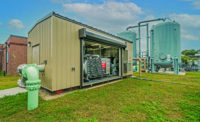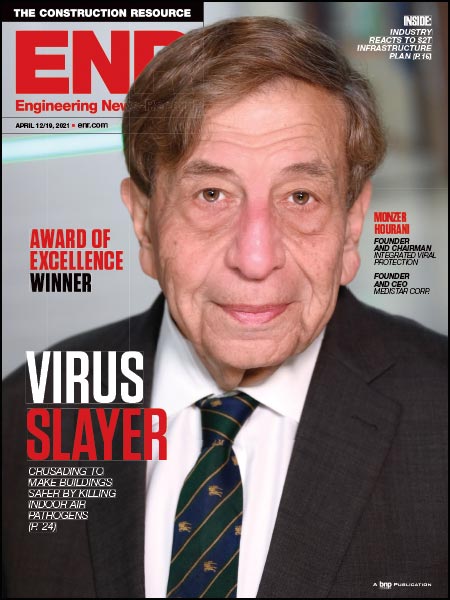During those years, Magnusson not only emerged as the voice of his firm, but of his profession, making more than 260 presentations to colleagues, academics and laymen. His also was a voice of calm and clarity during one of the nation's darkest chapters, the 2001 collapse of the twin towers at New York City's World Trade Center, designed by SHCR's Skilling and Leslie Robertson in the late 1960s and early 1970s.
"That was truly an amazing time, hopefully never to be repeated," Klemenic says. "We were watching the events of that morning unfold on television in a conference room. Then the phone started to ring—hundreds of calls from the media—and Jon became a beacon of reason amid declarations that this was the end of high-rise buildings. Many times he was asked, 'Why did the towers fall?' And his response was, 'How were they able to stand for as long as they did after direct hits from a pair of 767s?'"
"The towers were built with more redundancy than I'd ever seen," says Magnusson. "But the answer wasn't —and isn't—how to out-build terrorists, but how to keep terrorists from hitting buildings. People really thought we'd come to the end of an era, that we'd build no more high-rises, but we still do. All the reasons we build them are still there."
Magnusson is dedicated to mentoring a new generation. In 2001, he established a local branch of the Architecture, Construction and Engineering (ACE) Mentor Program to expose high school students in Seattle's Puget Sound area to potential career opportunities. "I first heard about ACE at a Structure's Congress breakfast in Washington, D.C., during which Charlie Thornton, chairman of engineer Charles H. Thornton and Co., brought a young woman on stage and announced she was one of the firm's most recent scholarship winners," Magnusson says. "For a moment she just stood there, and then she started to cry, saying she never thought she'd be going to college, and I said, 'I really need to get a program like this going.'"







Post a comment to this article
Report Abusive Comment